Afghan treasures dazzle with brilliance
Writer: Cao Zhen | Editor: Doria Nan | From: Shenzhen Daily | Updated: 2018-08-31
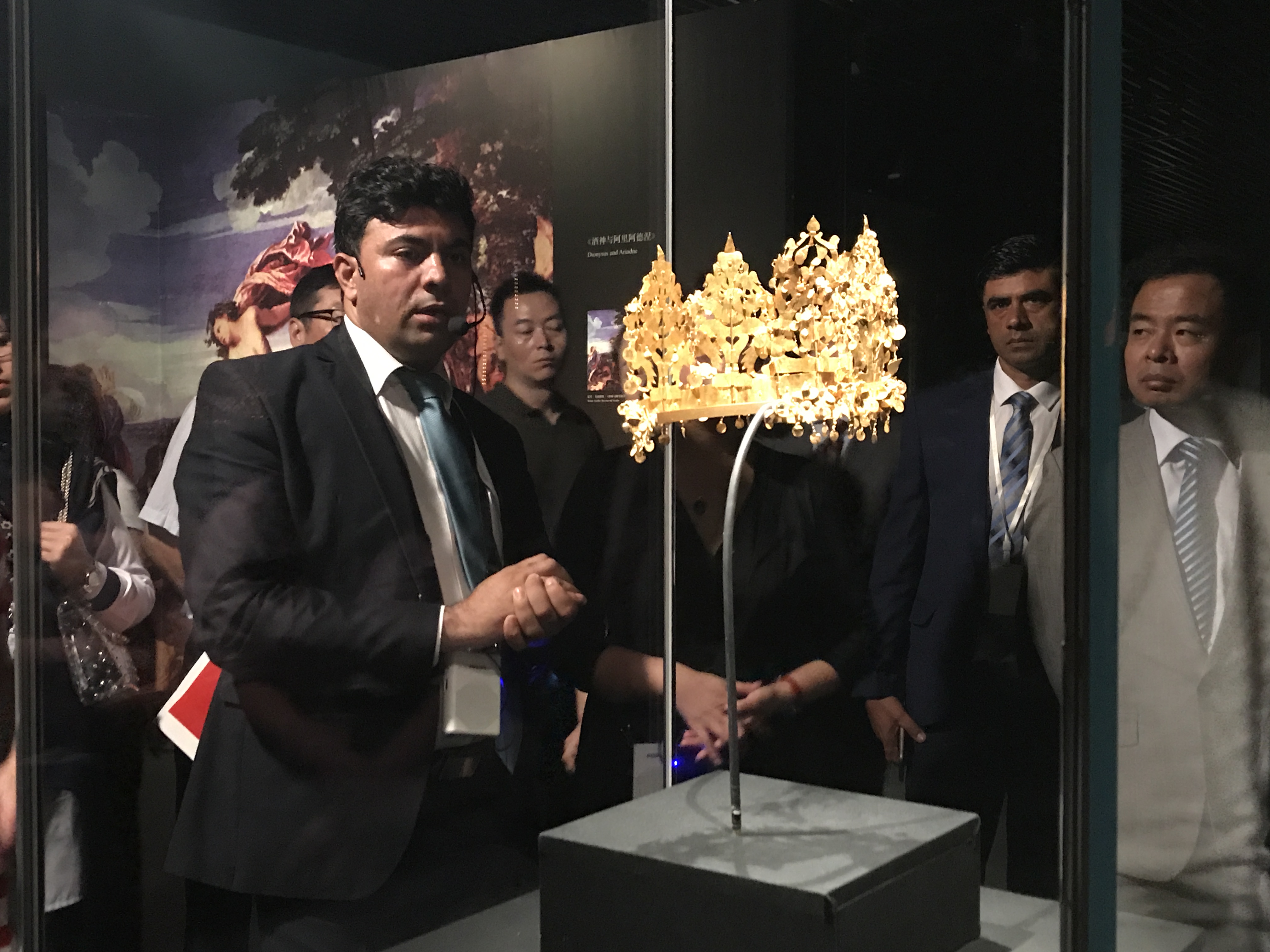
Mohammad Fahim Rahimi, director of National Museum of Afghanistan, introduces the gold crown at the exhibition in Nanshan Museum on Aug. 25. (Photos by Cao Zhen)
"Treasures of the Golden Age," the much-anticipated exhibition of magnificent Afghan treasures that has been touring around the world since 2006, now arrives at Nanshan Museum in Shenzhen, showing how war-torn Afghanistan was once the crossroads of the ancient world.
The 231 artifacts from the National Museum of Afghanistan were unearthed from the Central Asian country's four famous archaeological sites: Tepe Fullol, Ai-Khanum, Tillya Tepe and Begram. The glittering gold treasures, the lustrous glass vessels and the damaged pillars and figurines are exhibited in a dark exhibition room, creating a mysterious atmosphere. Every object is enthralling and merits close admiration.
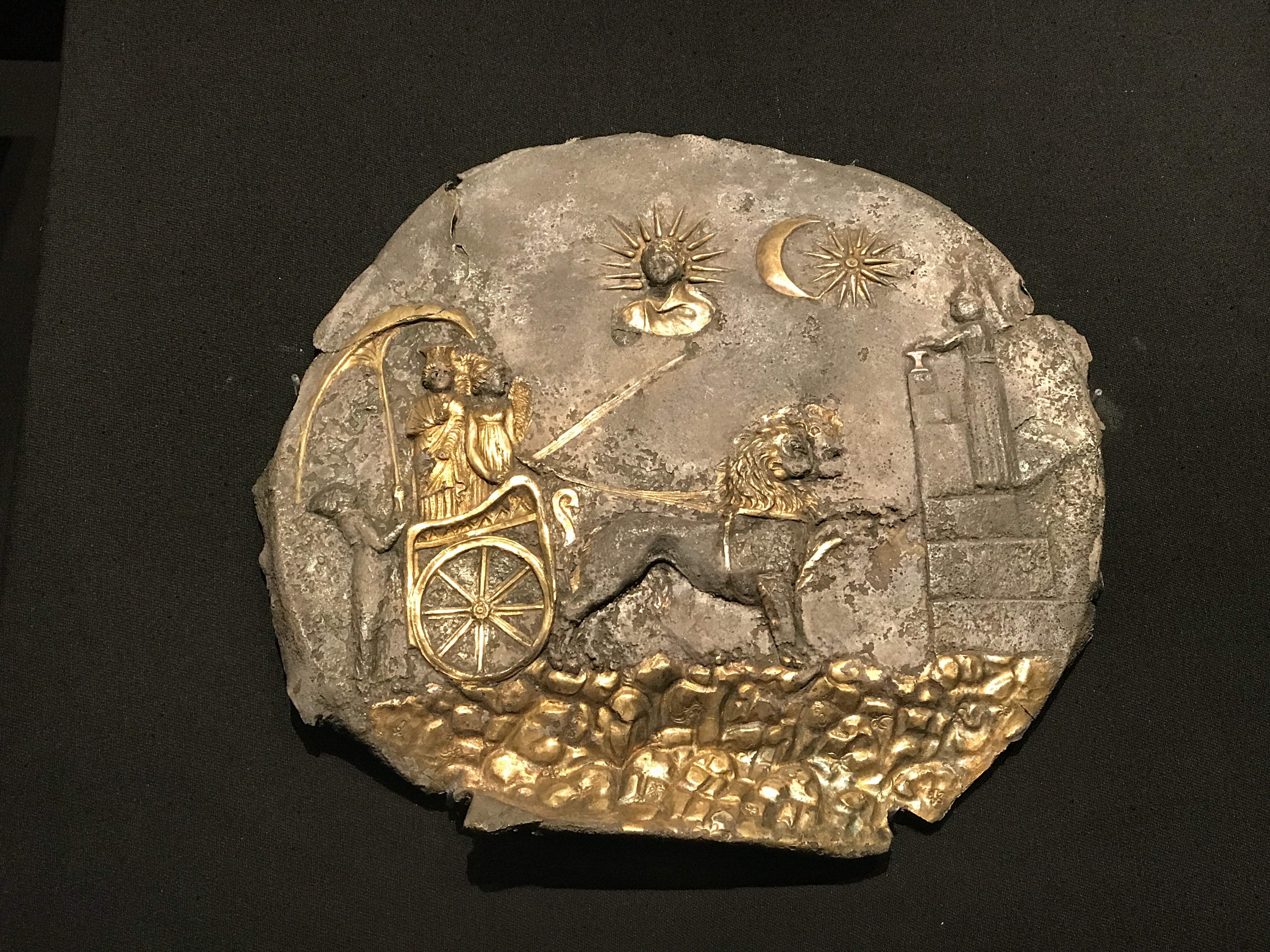
A Cybele plaque (3rd century B.C.)
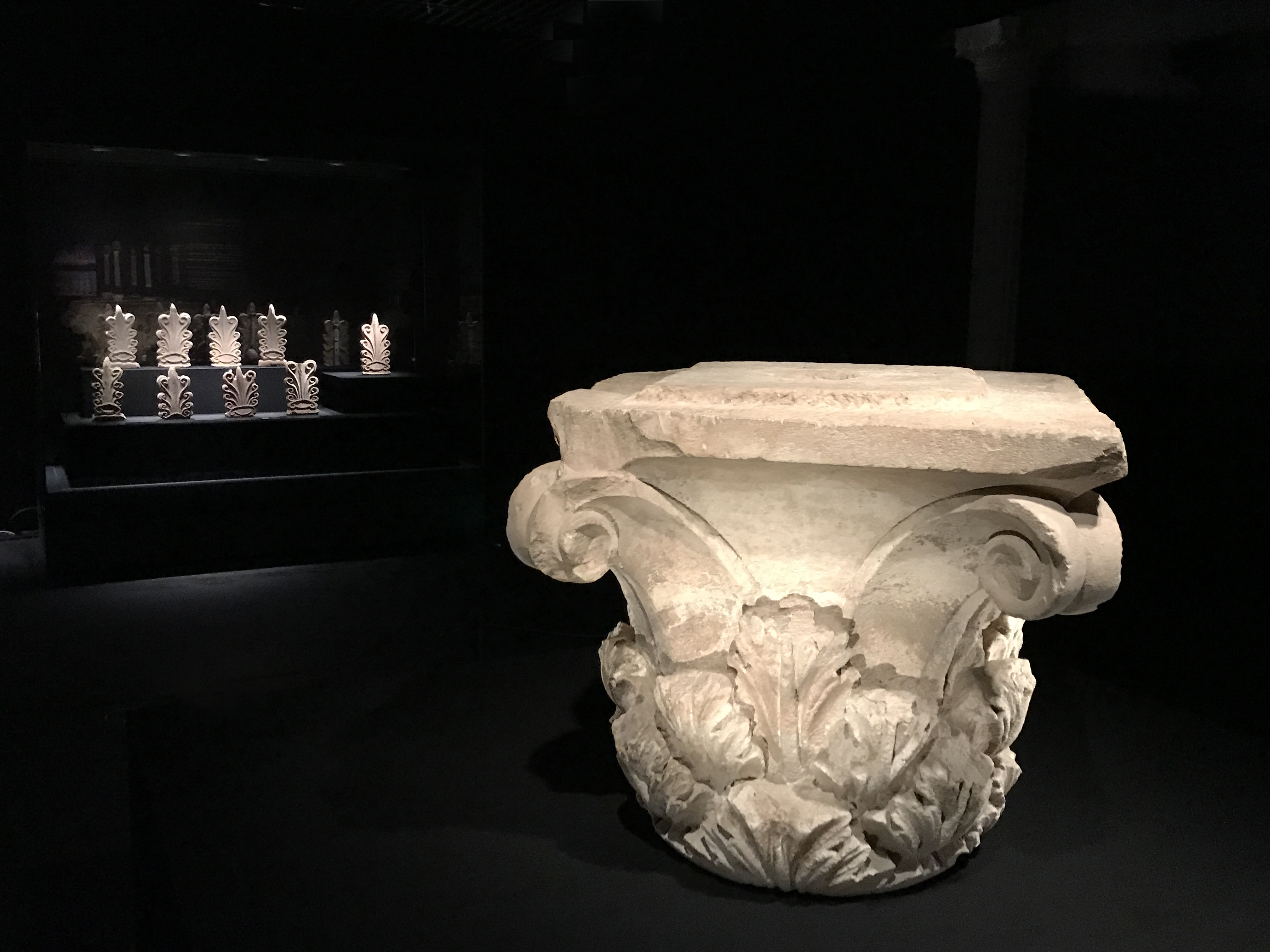
Winged antefixes (3rd century B.C.) and a Corinthian capital (before 145 B.C.)
"The exhibition focuses on the rich history of Afghanistan, which once lay at the heart of the Silk Road connecting different ideas and civilizations. The exhibition also shows my brave colleagues' efforts in the preservation of our culture in harsh times," said Mohammad Fahim Rahimi, director of National Museum of Afghanistan.
The exhibition is divided into four sections based on the four archaeological sites. From the Bronze Age to the first century, from Greek conquerors to the northern nomads, from a strategic military location to an important trading hub on the Silk Road, each section provides a snapshot of a long-vanished tribe or civilization.
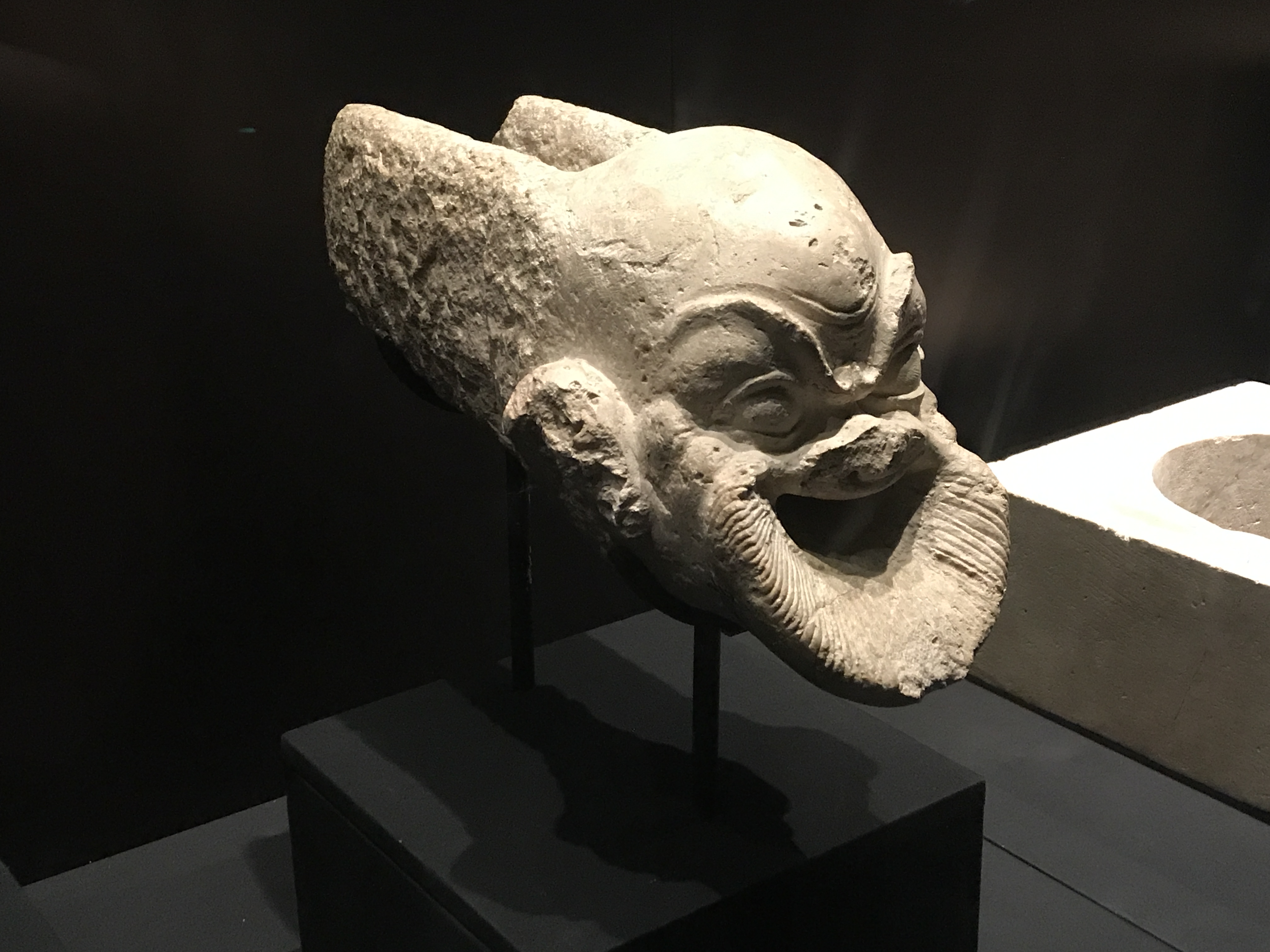
A gargoyle (2nd century B.C.)
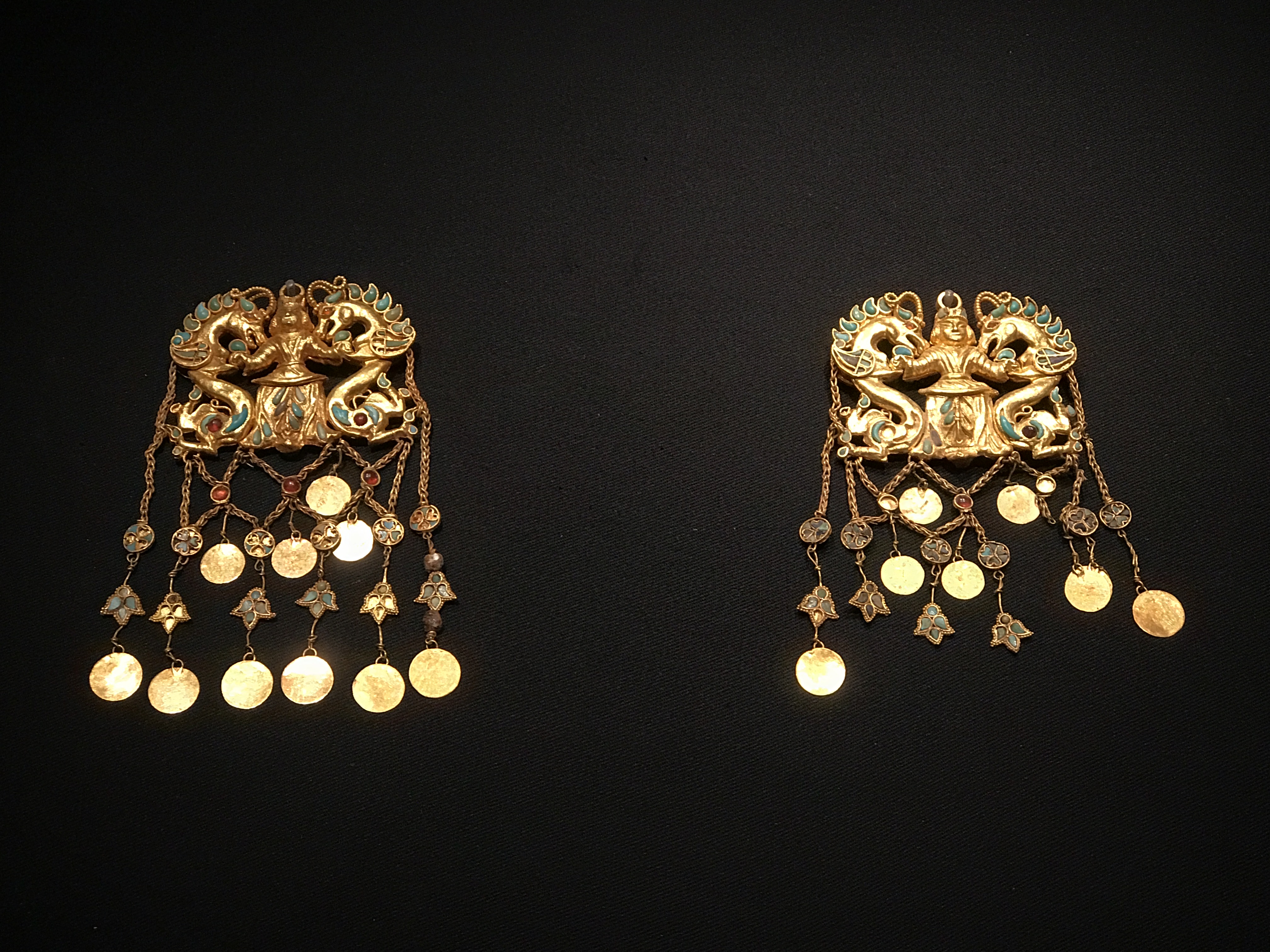
Pendants with dragon master (25-50 A.D.)
In the first section "Tepe Fullol," several gold cups on display feature geometrical or bull or boar patterns. Rahimi said that Tepe Fullol was a village in northern Afghanistan where gold and silver vessels unearthed there dated to the Bronze Age and the geometric design was a typical feature of the Bronze Age civilization in Central Asia.
Moving to the second section "Ai-Khanum," come the strongly Hellenic objects, such as winged antefixes with flame palmette designs, Corinthian capitals, a gargoyle in a human face shape and a stele base inscribed with a motto reflecting the ancient Greeks' philosophy.
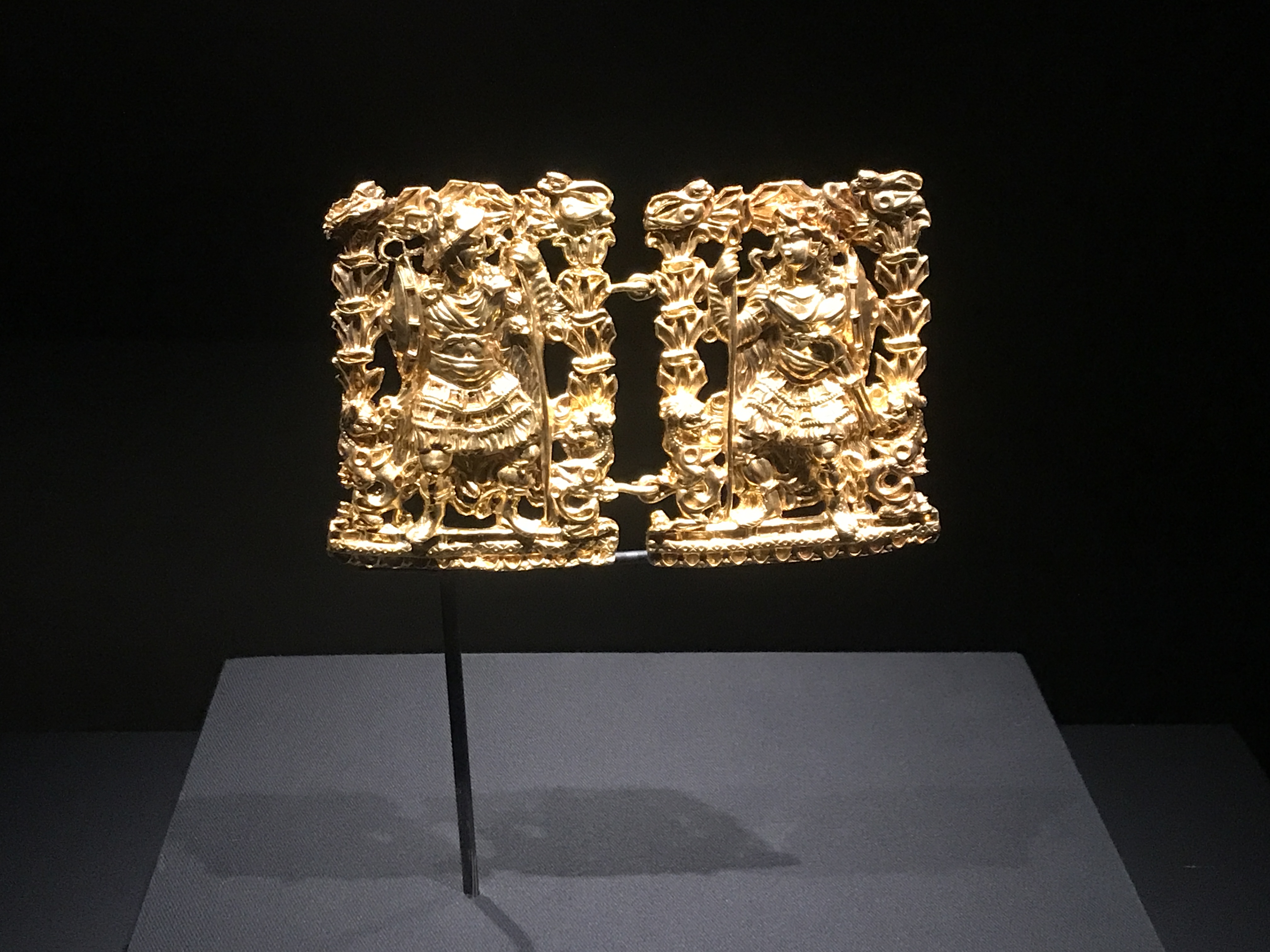
Clasps (25-50 A.D.)
Ai-Khanum in northeastern Afghanistan was historically known as Bactria founded in the late fourth century B.C. following the conquest by Alexander the Great. The settlement of Greek colonists and the resulting spread of Greek culture resulted in a Hellenistic civilization for nearly two centuries until its annihilation by northern nomadic invaders who eventually formed a civilization known as the Kushan.
The third section, "Tillya Tepe," is the most dazzling and intoxicating part of the exhibition since most of its objects are gold. Tillya Tepe, literally "hill of gold," is an archaeological site in northern Afghanistan. More than 20,000 gold articles excavated in six tombs possess gold purity of 70 percent. The burial habits are connected to the nomadic groups and archeologists believe that the tombs dated back to the first century in the early period of the Kushan Empire.
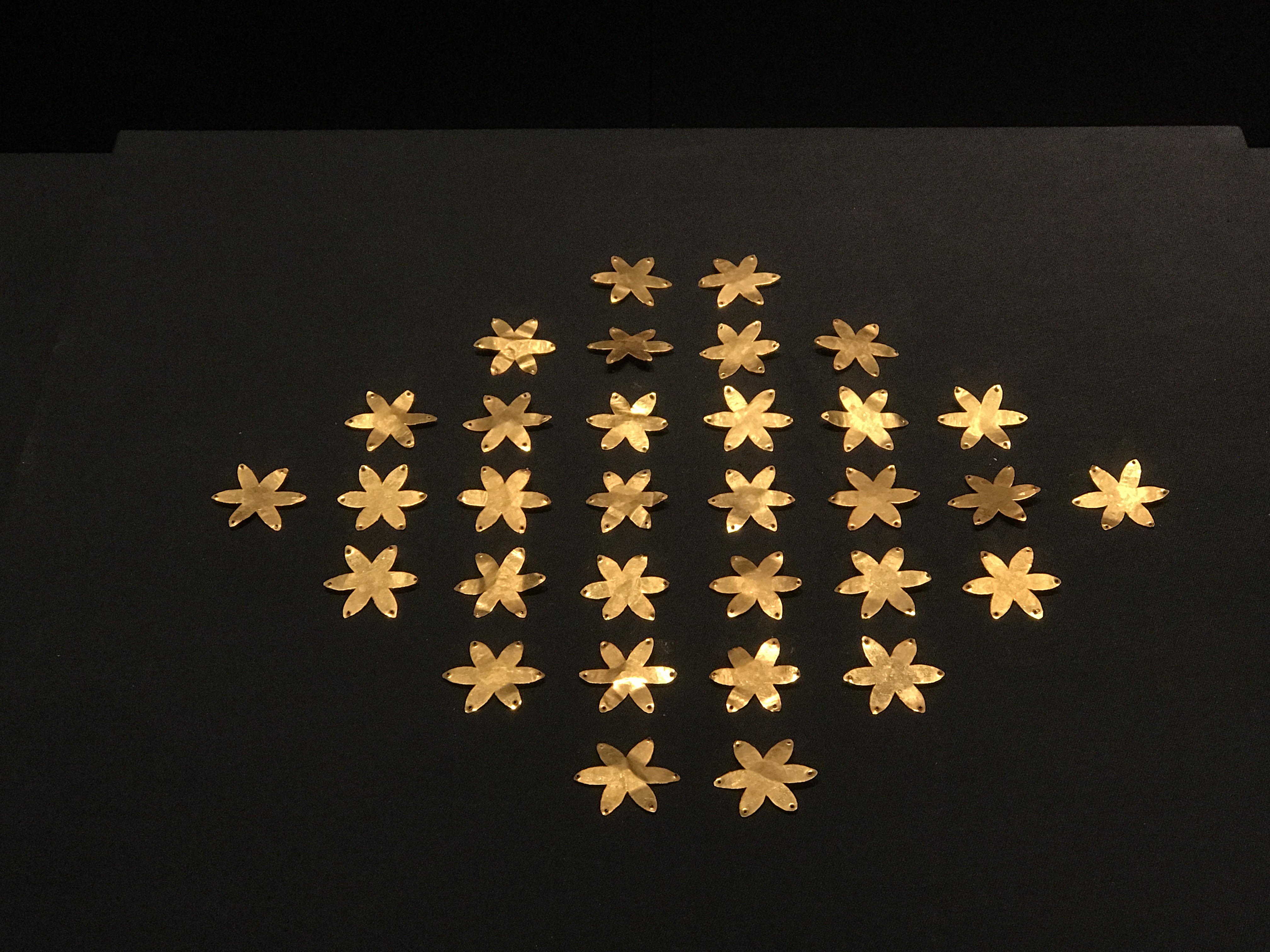
Gold accessories in a petal shape (25-50 A.D.)
The most beautiful piece in this section is a magnificent crown of beaten gold made for a princess. Rahimi said that each elaborate piece was slotted into a single band of gold so that the whole crown could be collapsed and stored. Other remarkable ornaments include a golden belt with medallions, a gold necklace with turquoises and a gold ram figurine.
The exhibition route ends with the fourth section "Begram," which clearly shows Afghanistan's contact with other ancient civilizations. "Begram in northeastern Afghanistan was a hub on the Silk Road. Based on the characteristics of the Begram findings, the city was likely a commercial cargo terminal during the period of the Kushan Empire. The works of art are either purely Hellenistic, Roman, Chinese or Indian, such as a gold sheath with Chinese dragon patterns, Indian ivory products and Roman glassware," said Rahimi.
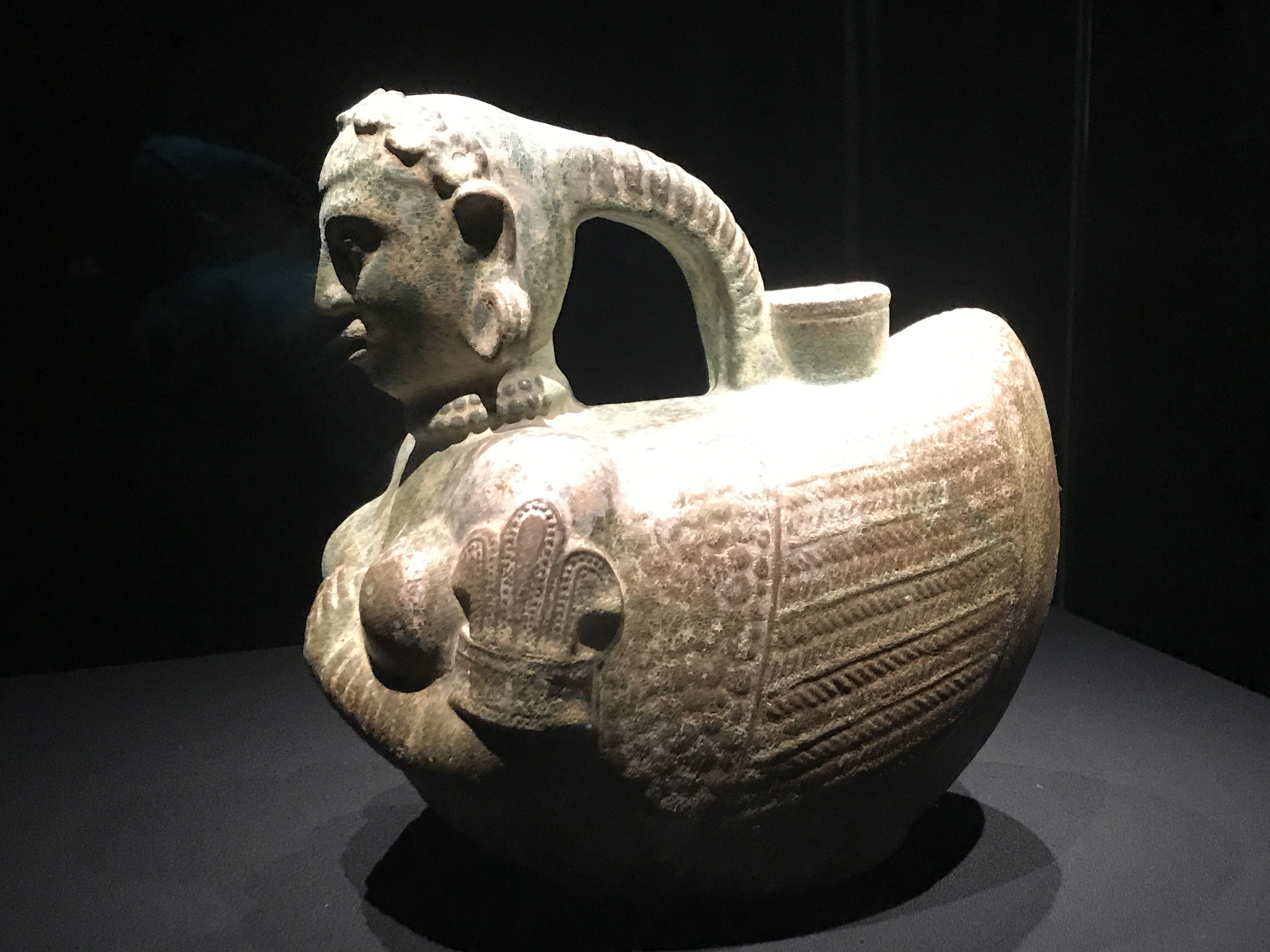
A Kinnari-shaped jug (1st century)
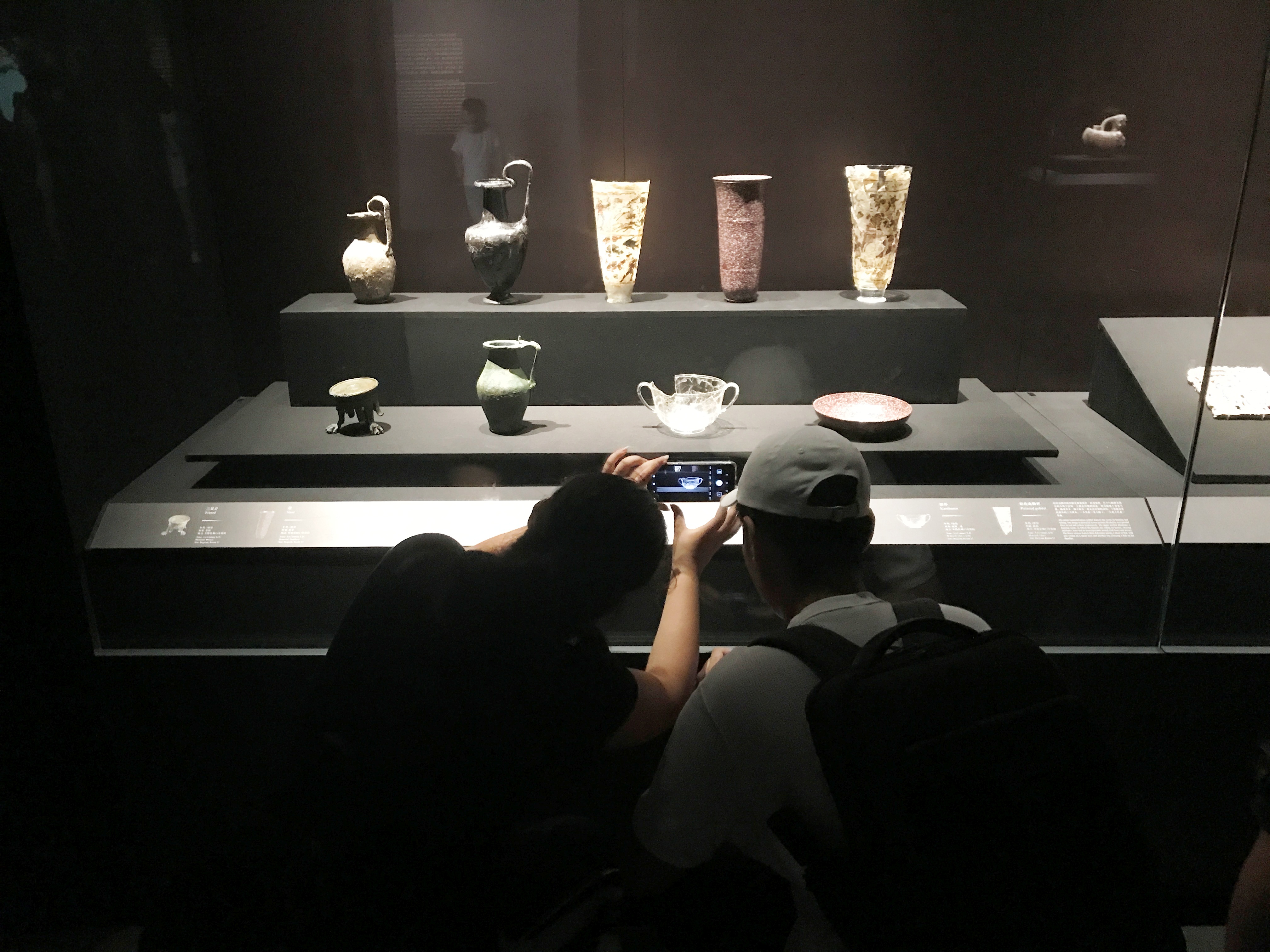
Visitors take photos of glassware at the exhibition in Nanshan Museum.
Opened in 1919, the National Museum of Afghanistan was once considered to be one of the world's finest art organizations. The museum's collection had earlier been one of the most important in Central Asia, with over 100,000 items dated back to several millennia. However, repeated wars over the past 20 years have resulted in the museum being looted several times and in a great loss of objects, though some artifacts were recovered later.
Since 2006, certain important parts of the museum's collection have been exhibited in France, the United States, Australia, Germany, Britain and most recently China. Shenzhen is the 23rd stop on the ongoing world tour.
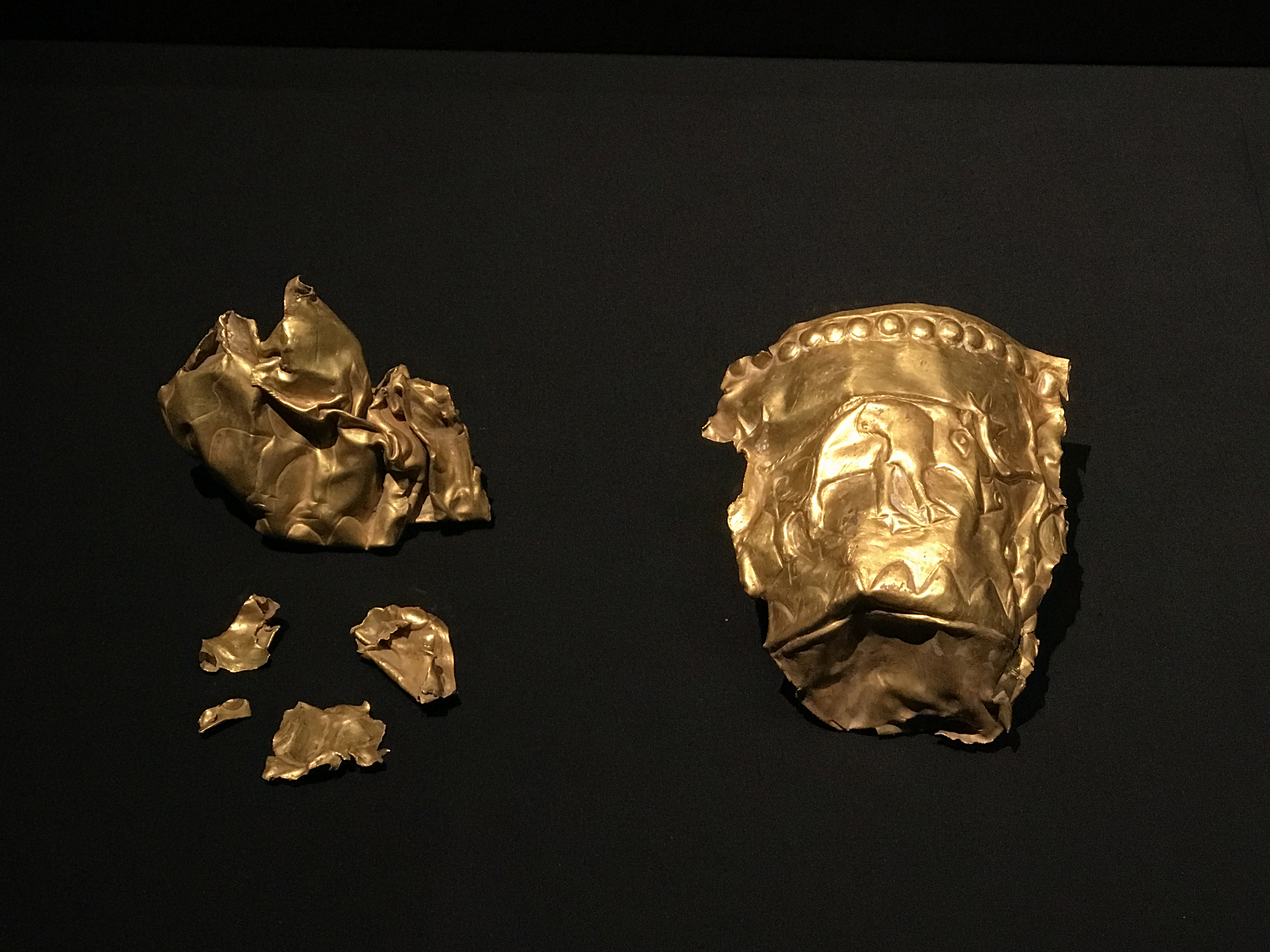
A gold cup with boar patterns (2200-1900 B.C.)
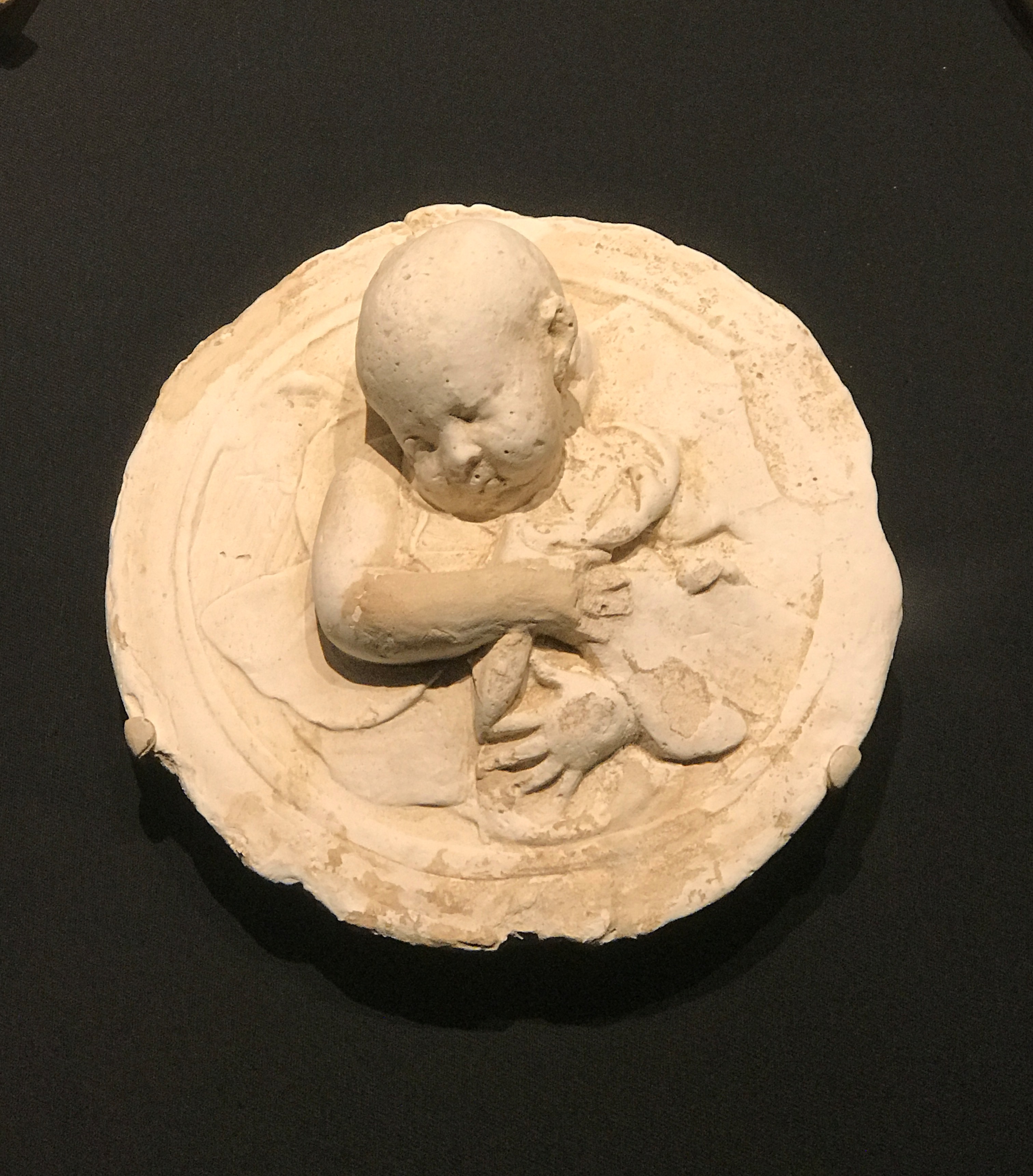
A circular medallion with Eros and Psyche (1st century)
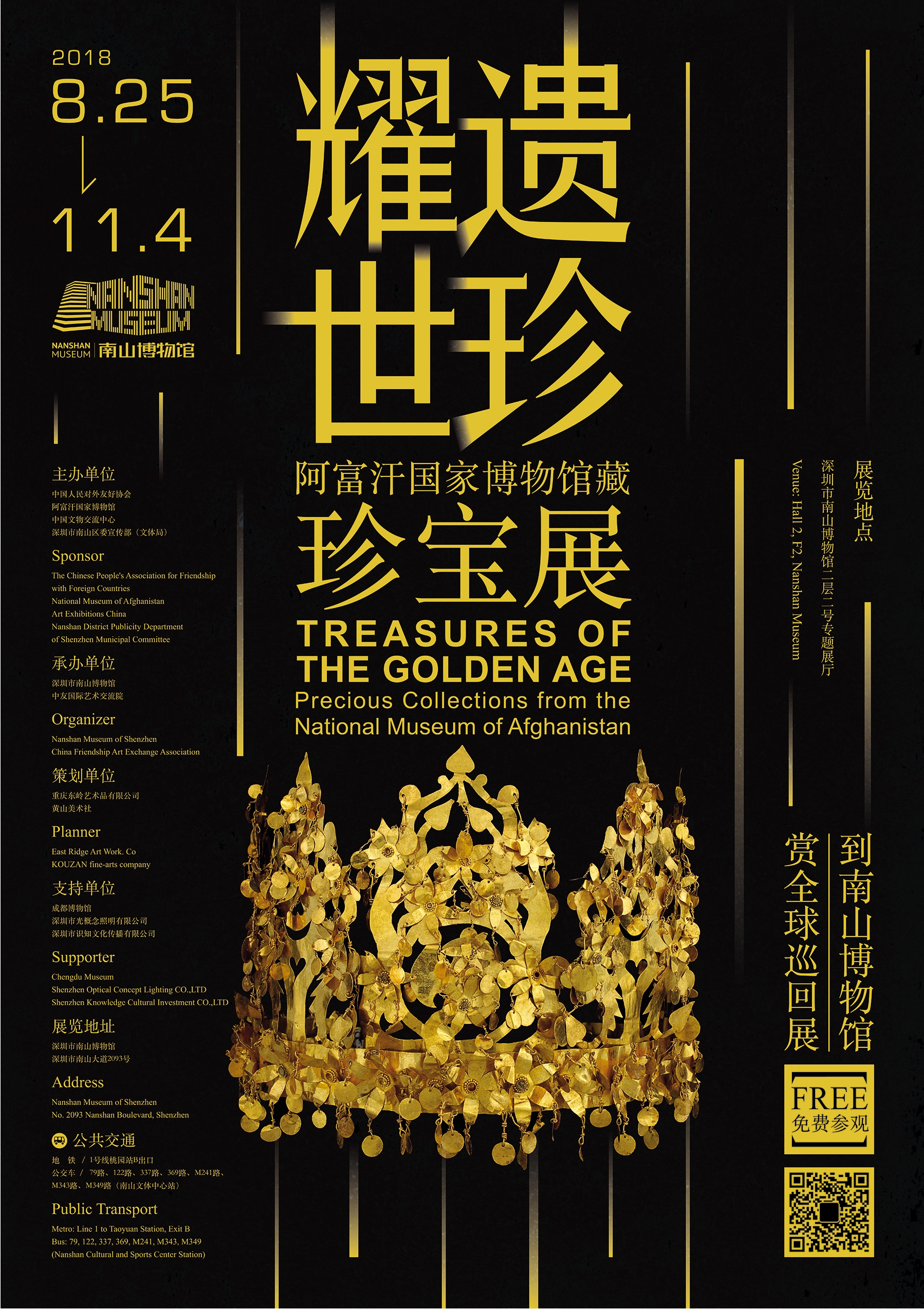
Dates: Until Nov. 4
Hours: 10 a.m.-6 p.m., closed Mondays
Tickets: Free
Venue: Nanshan Museum, 2093 Nanshan Boulevard, Nanshan District (南山区南山大道2093号南山博物馆)
Metro: Line 1 to Taoyuan Station (桃园站), Exit B